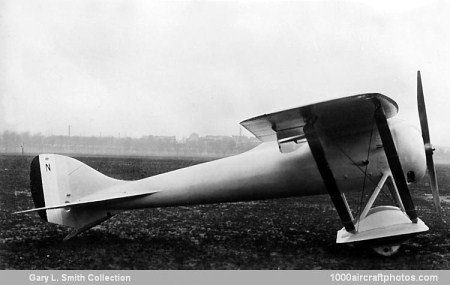The wing, which was of exceptionally broad chord, incorporated substantial cut-outs at the trailing edge roots to provide the pilot with a measure of downward view. The auxiliary surface braced beneath the fuselage provided attachment points for the inclined airfoil-section wing bracing struts. It also enclosed the landing gear axle and the upper portions of the wheels. The wooden monocoque fuselage was essentially similar to that of the Nieuport 29, and the intended armament consisted of two 0.303 in (7.7 mm) Vickers guns.
Development was abandoned despite excellent performance achieved on comparatively low power, possibly as a result of the rotary engine being by consensus passé by this time.
Span: 28 ft 2.5 in (8.60 m)
Length: 21 ft 7.8 in (6.,60 m)
Height: 7 ft 10.5 in (2.40 m)
Wing area: 193.76 sq ft (18.00 sq.m)
Weight empty: 1.102 lb (500 kg)
Loaded weight: 1.720lb (780 kg)
Max speed: 143 mph (230 kmh)
Endurance: 2 hr
